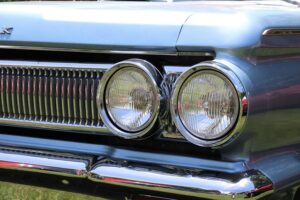Mastering Vintage Car Restoration: A Comprehensive Guide to Select Classic Car Revival
Restoring a classic car is an art that combines historical preservation with meticulous craftsmanship, from selecting the perfect vintage vehicle to intricate work like engine disassembly and wheel re…….
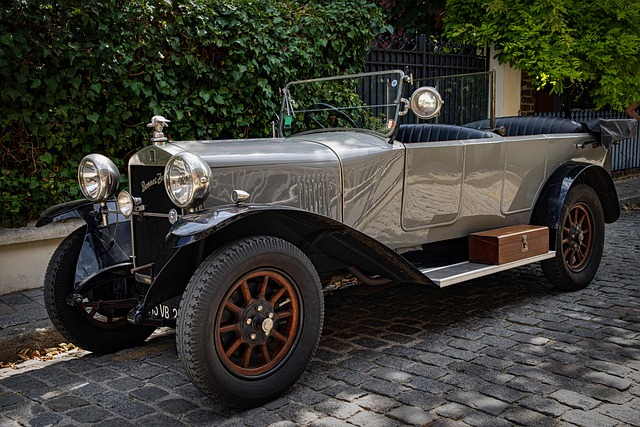
Restoring a classic car is an art that combines historical preservation with meticulous craftsmanship, from selecting the perfect vintage vehicle to intricate work like engine disassembly and wheel restoration. Choosing the right car, budgeting, and research are crucial. Disassembly, inspection, and documentation are initial steps, followed by sourcing authentic parts for accuracy. Assembly requires detail-orientation and historical knowledge, using advanced tech for precise restoration while maintaining vintage aesthetics. Testing and final touches, including safety inspections and aesthetic polishing, complete the process for a beautifully restored classic.
Restoring a vintage car is an art that combines passion, skill, and meticulous attention to detail. This comprehensive guide, “Select Classic Car Restoration,” takes you on a journey through the intricate process of bringing these timeless machines back to their former glory. From understanding the unique challenges to sourcing authentic parts, we explore every step essential for a successful restoration project. Get ready to delve into the world of vintage car enthusiasts and discover the art of selecting, preparing, and perfecting your classic automobile.
- Understanding Vintage Car Restoration: The Process and Challenges
- Choosing the Right Classic Car for Restoration: Factors to Consider
- Preparation and Disassembly: Laying the Foundation for a Successful Restoration
- Parts Acquisition and Reproduction: Sourcing Authenticity in Vintage Cars
- Assembly and Finishes: Bringing the Classic Back to Life
- Testing and Final Touches: Ensuring Performance, Safety, and Aesthetics
Understanding Vintage Car Restoration: The Process and Challenges
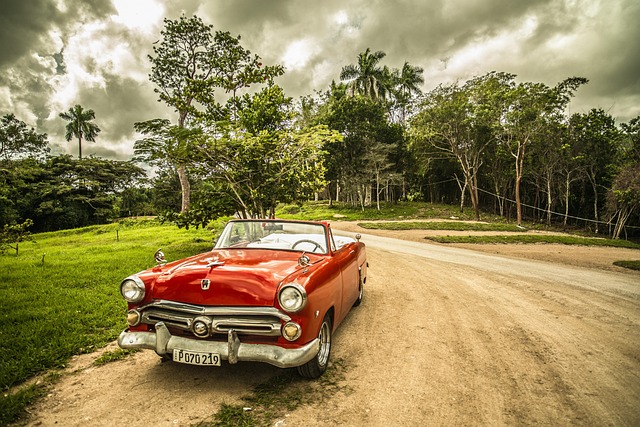
Restoring a vintage car is an intricate and meticulous process that involves careful navigation through time to bring a piece of automotive history back to life. It’s more than just fixing a machine; it’s about preserving a cultural artifact. The journey begins with selecting the classic car, often characterized by its timeless design and craftsmanship, which has stood the test of time. This could be anything from a vintage race car to an old family heirloom.
The restoration process is both challenging and rewarding. Restoring a classic car engine involves disassembly, meticulous cleaning, and precise rebuilding, ensuring it purrs like new. Similarly, wheel restoration is crucial for achieving that show-room shine, making each curve and detail pop. For race cars, the challenge lies in maintaining historical accuracy while enhancing performance, a delicate balance between nostalgia and modern improvements. Restoring vintage race cars requires a deep understanding of the car’s heritage to ensure it races as its creators intended.
Choosing the Right Classic Car for Restoration: Factors to Consider
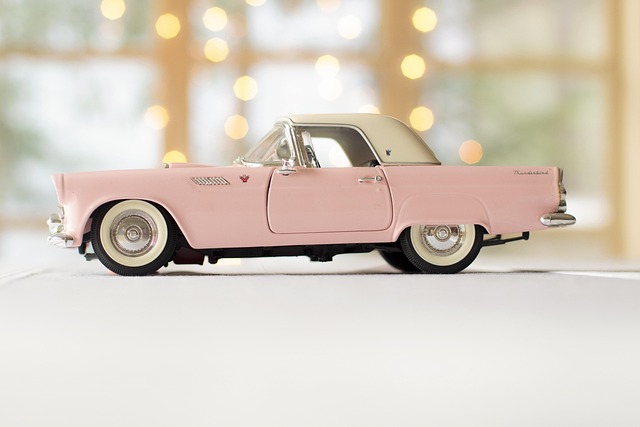
Choosing the right classic car to restore is a crucial first step in this fulfilling journey. Consider your expertise and experience with older vehicles; some cars require specialized knowledge and skills due to their intricate mechanisms or rare parts. Researching different models, their history, and common issues will help you select a suitable candidate that aligns with your abilities and interests.
Additionally, budget plays a significant role in the selection process. Vintage car restoration supplies for classics can vary greatly in price, so it’s essential to set a realistic financial plan. Restoring classic cars on a budget is achievable through creative sourcing of parts, upcycling, and prioritizing tasks to avoid unnecessary expenses. Remember, the right car can make all the difference, offering both a rewarding challenge and a beautiful end product.
Preparation and Disassembly: Laying the Foundation for a Successful Restoration
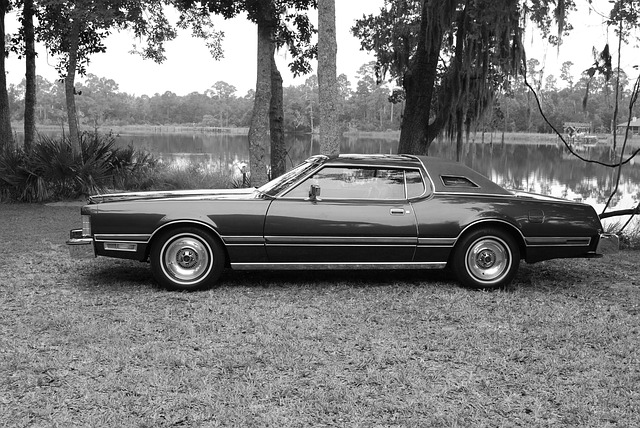
Restoring vintage cars is an art that requires meticulous preparation and disassembly to lay the foundation for a successful transformation. When tackling a classic car restoration, whether it’s a meticulous inside-out overhaul or focusing on the intricate details of the interior, the initial steps are vital. Start by thoroughly inspecting the vehicle, identifying any damage, corrosion, or areas needing significant attention. This process involves removing panels, disassembling components, and carefully documenting each step to ensure an accurate reassembly later.
Disassembly allows restorers to gain insights into the car’s history and existing conditions, making it a crucial stage in the restoration process. It provides an opportunity to address structural issues, replace worn-out parts, and prepare the car for meticulous refitting. By following expert tips on classic car valuation and prioritising each task, restorers can ensure that their efforts result in a beautifully restored vehicle that captures the essence of its vintage charm while meeting modern safety standards.
Parts Acquisition and Reproduction: Sourcing Authenticity in Vintage Cars
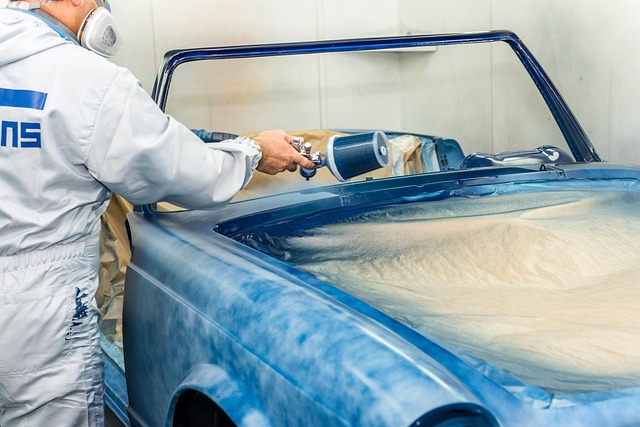
When diving into a classic car restoration project, particularly with vintage vehicles, parts acquisition is a meticulous process that demands attention to detail. The quest for authenticity is paramount; each component must accurately replicate the original specifications to ensure the restored car’s historical integrity. This involves sourcing genuine replacement parts or, in some cases, reproducing them from scratch using traditional methods and materials.
For enthusiasts embracing the challenge of restoring vintage cars step by step, consulting expert resources is invaluable. They can guide you in finding rare or discontinued pieces, often through specialized networks and suppliers dedicated to classic car refurbishment. This meticulous approach ensures that when reassembling your classic convertible or any other vintage model, every detail aligns with the era’s manufacturing standards, making your vehicle a true testament to automotive history.
Assembly and Finishes: Bringing the Classic Back to Life
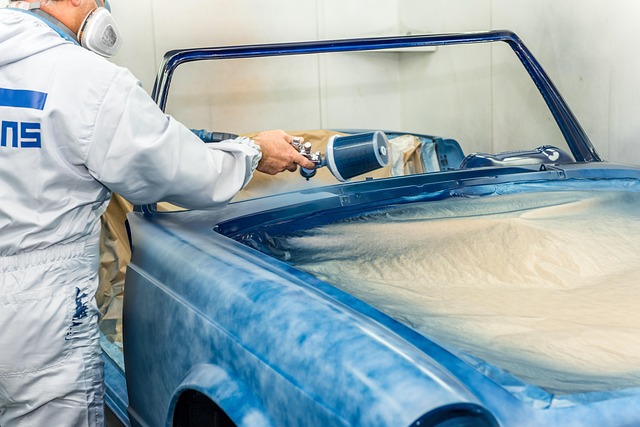
The process of assembling a vintage car involves meticulous attention to detail, as every part must be carefully selected and fitted to ensure authenticity and functionality. Restoring classic cars safely requires a deep understanding of the vehicle’s history and original specifications. Each component, from the engine to the smallest trim piece, is carefully restored or replaced, using either period-correct parts or high-quality replicas. Proper assembly ensures that the car not only runs but also looks exactly as it did when it left the factory.
Finishes play a crucial role in bringing a classic car back to life. Modern technology offers both advantages and challenges in this regard. Advanced tools and techniques can aid in achieving precise results, especially in areas like frame straightening, which is essential for maintaining structural integrity. However, selecting finishes that honor the car’s vintage while ensuring longevity requires careful consideration. The goal is to restore the car’s original beauty without compromising its historical value, making it a true testament to the art of classic car restoration.
Testing and Final Touches: Ensuring Performance, Safety, and Aesthetics

After meticulously disassembling and restoring each component of your vintage vehicle, it’s time for testing and final touches. This crucial phase ensures that your classic car not only runs but also performs and looks its best. Start with a comprehensive test drive to assess engine performance, handling, and safety features. Check all systems – brakes, electrical, and steering – to ensure they operate smoothly and meet modern safety standards.
For an exceptional restoration like restoring a classic Jeep or achieving show-quality results in general car restoration tips, pay attention to the aesthetics. This includes polishing the exterior to a flawless shine, meticulously repairing or replacing any damaged trim or upholstery, and applying high-quality finishes. The final touches should enhance the car’s timeless beauty while preserving its vintage charm.
Restoring a vintage car is an art that requires dedication, knowledge, and a deep appreciation for automotive history. By carefully navigating each stage, from understanding the process to sourcing authentic parts, you can successfully bring a classic back to its former glory. Choose your restoration project wisely, considering both personal preference and the availability of necessary resources. With meticulous preparation, disassembly, and assembly, along with attention to detail in finishes and final testing, you’ll create a stunning testament to automotive craftsmanship that will be admired for years to come. This guide on select classic car restoration provides a roadmap for achieving exceptional results.

